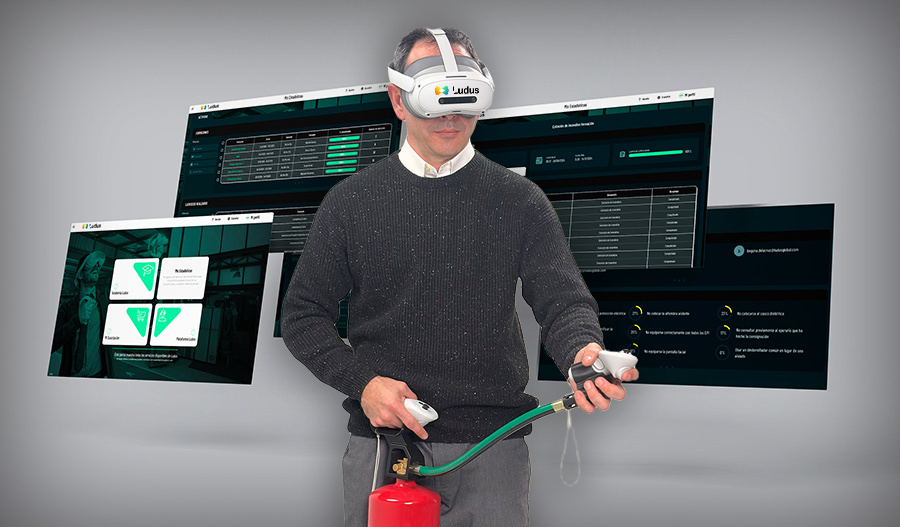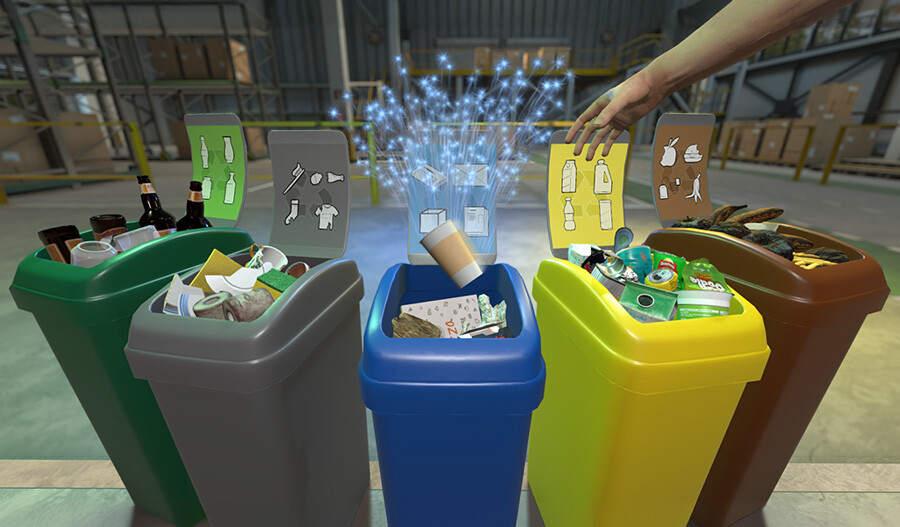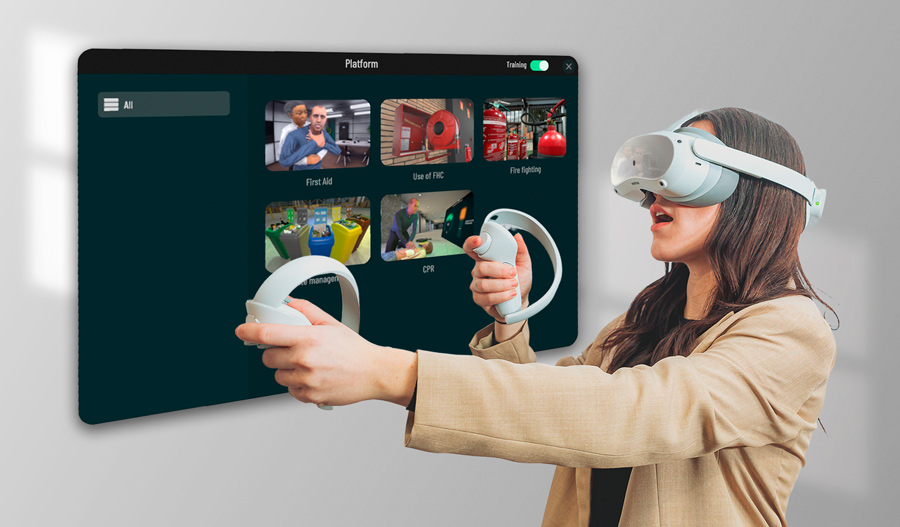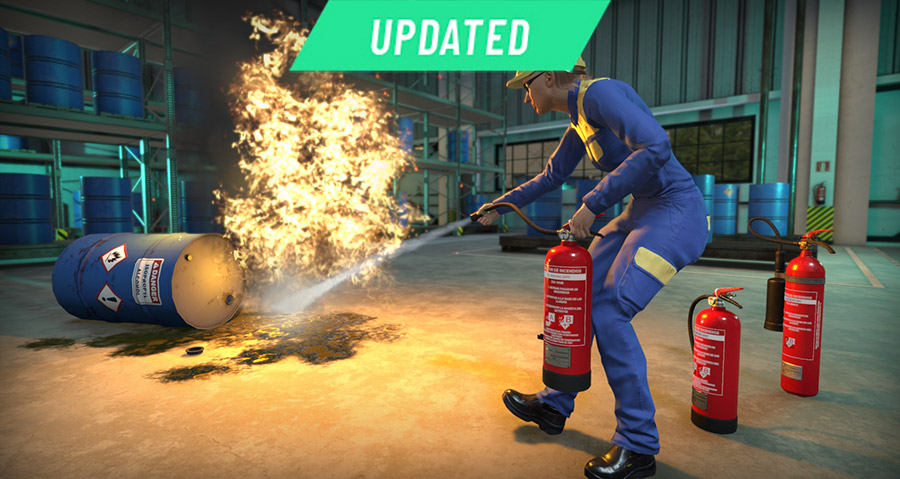Train in CPR using an immersive simulation from anywhere — interacting with your hands and using any manikin, with no other equipment required beyond a standalone VR headset. This is now possible with Ludus’ new wire-free CPR simulation.
This product, now available in the wireless version of our platform, marks a turning point in Ludus' offering. It represents a major milestone in terms of both portability and ease of use and reflects our ongoing commitment to improvement and taking our simulations to the next level.
What is the wireless CPR simulation?
It’s a VR simulation available in standalone mode — meaning no PC connection is required. With a compatible standalone VR headset, learners can access the simulation and interact using just their hands and any standard CPR manikin.
Key features and innovations
Hand detection and natural interaction
The simulation starts by prompting users to set down the controllers and hold their hands in front of the headset for detection. From there, the learner can control the simulation — even position the manikin — using natural hand movements.
This enhances the realism of the VR experience significantly.

Compatible with any CPR manikin on the market
You no longer need a sensor-equipped manikin. The system works with any CPR manikin — you will simply align it with the virtual victim at the beginning of the simulation.
In fact, while using a manikin is highly recommended, other objects like a cushion or backpack can be used in situations where a manikin isn't available (e.g., sales demos).
Real-time compression evaluation
Regardless of the object used, the simulation detects chest compressions and provides real-time feedback. Learners can view depth and rhythm indicators to stay within recommended parameters and develop muscle memory.
Additional features of the wireless CPR simulation
Guided / unguided mode
- Guided mode provides on-screen instructions to help learners follow the correct CPR steps — ideal for first-time users or those reinforcing early knowledge.
- Unguided mode allows learners to perform CPR with no prompts, encouraging autonomy and realism (and allowing mistakes).
AED use
The simulation includes a fully functional virtual AED (Automated External Defibrillator) that mimics all key functions of a real device. The user must apply the two pads to the patient’s chest and side.
The AED guides the learner:
- Instructing them not to touch the patient during analysis.
- Indicating when to administer a shock.
Simulation statistics
At the end of each session, learners receive immediate visual feedback with key performance stats:
- Duration of the exercise
- Total session time
- Mistakes made
- Compression depth and rhythm
- Pass / Fail result

In addition, Ludus’ predictive analytics system captures performance data in real time. This enables the creation of personalized reports and insights such as:
- Most frequent errors
- Weak areas that need reinforcement
- Opportunities to improve and tailor future sessions
This new simulation raises the bar in immersive CPR training — combining accessibility, realism, and data-driven improvement in one powerful tool.
---------------------------------------------------------------------------
Would you like to implement Ludus' Virtual Reality in your health and safety training?
Fill out this form to receive information about the options best suited to your company's needs.














